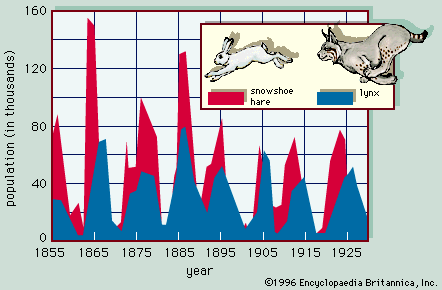 |
Negative Feedback: It is expected that mortality will increase as population density rises. There are more individuals in the population and more of them die. However, if, when population density rises, the mortality factor increases the proportion of the population that dies, then the number that die increase faster than the number added to the population. Since more die than are born, the population will decline in density toward its long term average. Likewise, if, at low densities, the mortality factor decreases the proportion that it kills, the population will increase again. Such a feedback from the population to the mortality factor to the population is
Positive Feedback: If the action of a population causes conditions that eliminate or depress the effects of mortality factors, then the population will be released from control. Its action produces a feedback that has a positive effect on future population growth. Eventually the population could reach a new equilibrium density much higher than its previous level. Examples of such positive feedback in the human population are: reducing the limitations of food supply by the agricultural revolution and the green revolution; reducing infant mortality by improved health care; decreasing the lethality of cancer and heart disease through medical research, etc.